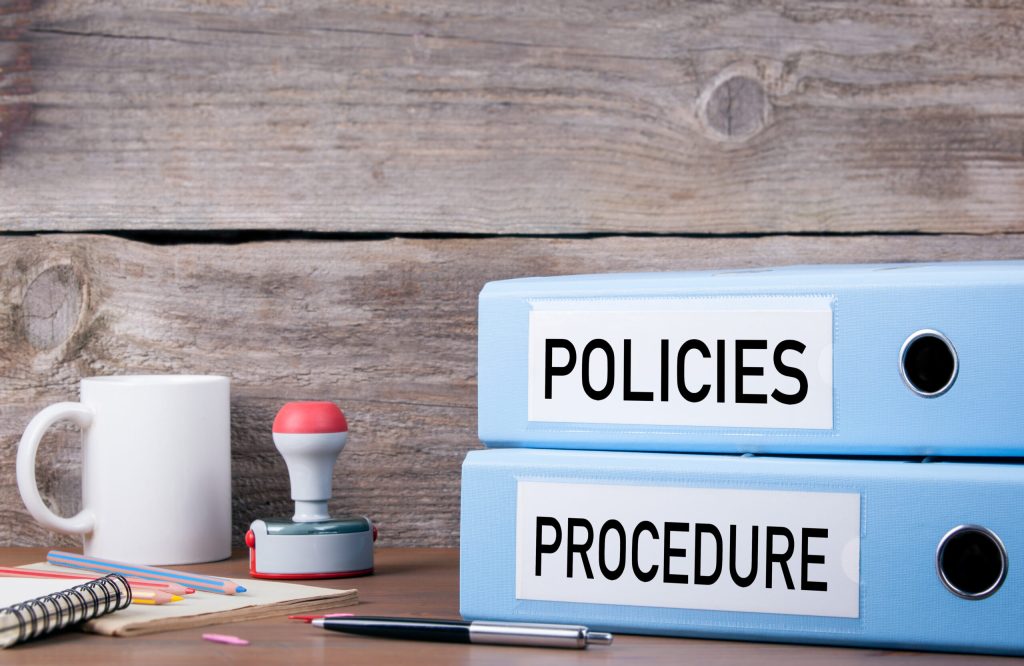
Setting up internal policies and procedures is a critical task for establishing consistency, transparency, and accountability within an organization. These documents provide clear guidelines for employees, helping ensure that operations are conducted efficiently and in compliance with applicable regulations. Here’s a step-by-step guide to help you set up an internal policy and procedure framework:
1. Identify the Need for Policies and Procedures
- Scope and Purpose: Start by identifying the areas where policies and procedures are necessary (e.g., finance, HR, operations, IT, compliance, etc.).
- Legal and Regulatory Requirements: Determine the legal and regulatory obligations your organization must meet. This will inform the policies and procedures you must implement to stay compliant.
- Best Practices: Consider industry standards and best practices in developing internal guidelines.
2. Create a Policy Development Team
- Involve key stakeholders from various departments (e.g., legal, HR, finance, operations) who have knowledge of the processes and potential risks. This team will help develop and review policies and ensure they align with the organization’s objectives and values.
3. Develop Procedures
- Step-by-Step Instructions: Procedures provide a detailed roadmap for carrying out specific tasks or processes. They should be clear and easy to follow.
- Responsibility: Assign responsibility for each step in the procedure.
- Timeframes: Specify how long each step should take and any deadlines associated with the procedure.
- Documentation Requirements: Identify what forms, reports, or records are needed for compliance.
4. Review and Approve Policies
- Internal Review: Have the policy development team and key stakeholders review the draft policies and procedures to ensure completeness and alignment with organizational goals.
- Executive Approval: Have the final policies approved by senior management or the board, depending on the structure of your organization.
5. Communicate and Distribute Policies
- Employee Training: Provide training on the new policies and procedures to all employees, ensuring they understand their responsibilities and the rationale behind the policies.
- Acknowledgment: Have employees sign an acknowledgment form confirming they have read, understood, and agreed to comply with the policies.
6. Implement and Monitor Compliance
- Enforcement: Designate responsible individuals or teams to monitor compliance with the policies.
- Internal Audits: Conduct regular internal audits to ensure that policies are being followed and are effective in mitigating risks.
- Reporting: Set up reporting mechanisms for employees to report violations or concerns regarding policies or procedures.
7. Review and Update Policies Regularly
- Periodic Reviews: Policies and procedures should be reviewed regularly (e.g., annually) to ensure they remain relevant and aligned with changes in the organization, legal requirements, and industry’s best practices.
Feedback Loop: Encourage feedback from employees and management on how policies can be improved or updated.